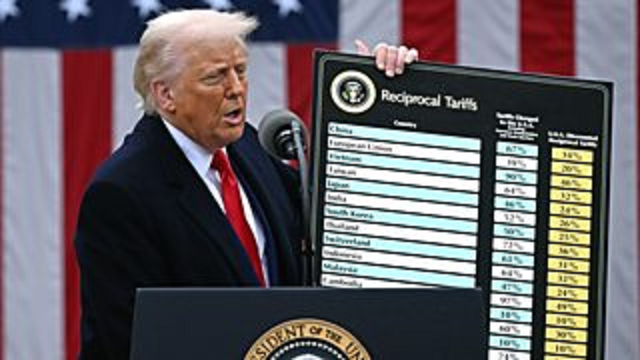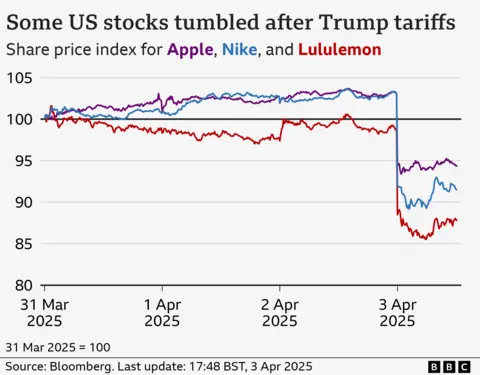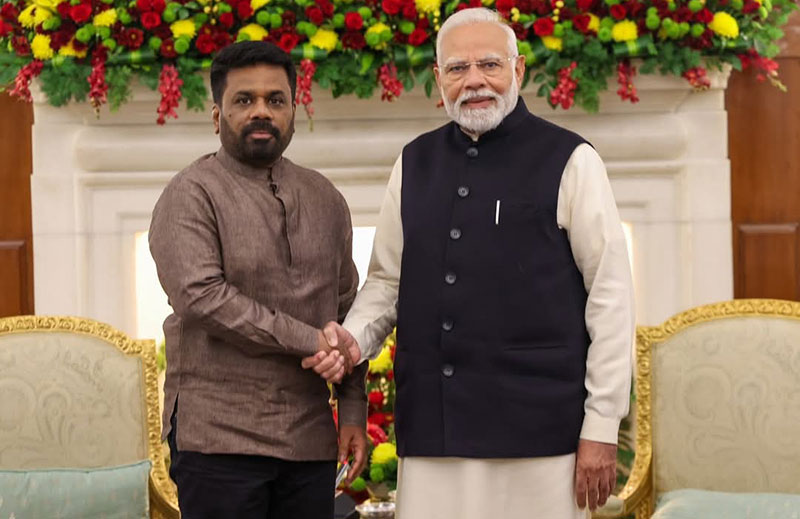Business
‘PUCSL electricity tariff revision is discriminatory’

Electricity tariff design must meet two main objectives: firstly, raising the money needed to pay for the costs of provision, and secondly, sending the right economic signals to each customer to favour the optimal socio-economic use of electricity.
To achieve the above objectives the principles that must be followed when designing tariffs are;
Economic sustainability or revenue sufficiency,
Equity or non-discrimination among users,
Economic efficiency in resource allocation, and
Transparency, simplicity, and stability of the methodology.
A well-defined and appropriate tariff structure must balance the financial sustainability of the sector on the one hand and the well-being of various segments of society on the other. The CEB’s tariff revisions seem to be mainly focused on the aspect of revenue sufficiency, ignoring the other aspects. As electricity is a commodity, there should be no difference in the prices charged to different users, except when reflecting any differences in the cost of providing services to different classes of users.
A differential tariff implies that some categories are subsidised leading to the question of who pays these subsidies. The current structure is such that households consuming an excess of 60 Kwh, and general purpose bulk supply users subsidise the industrial, hotel and charitable sectors.
Households that consume over 90 Kwh and general purpose bulk customers are charged a tariff that is double that of industries and hotels. With regards to hotels, in effect, domestic consumers subsidise foreign tourists. However, the differential tariff between general bulk supply and industrial/hotel users is meaningless. For example, a hall that hosts weddings and celebrations would be treated as a general bulk customer and be charged double the tariff that a hotel would be charged, even though both host similar events. A restaurant in a shopping mall would be charged as a general customer, but the same restaurant located within a hotel would enjoy a tariff half of that which a hotel incurs. While this differential existed under the previous tariff, it is made worse under the new structure; hotels faced a 10% increase in tariff while general users faced a 20% increase.
If the idea behind a lower tariff for hotels is to make the sector more competitive, then the solution is to address the causes of uncompetitiveness directly. One area is construction costs which raises the level of investment and the cost of maintenance. Protectionism for the domestic construction materials industry raises the costs of steel bars and rods, sanitary ware, aluminium extrusions, granite, electrical fittings, and carpets resulting in high overall construction cost. The effective protection granted on these items can exceed 200%; the savings in finance cost from a lower capital outlay would probably exceed the savings from a lower electricity tariff.
Economic value creation can take place in many different ways in an economy and the service sector is no less important than other sectors. The cross subsidisation between customers violates the equity or non-discrimination principle of a good tariff and discourages use by the overcharged and promotes overconsumption by the subsidised.
For example, the higher domestic tariff may serve as a disincentive for remote work. Remote or flexible work arrangements can reduce transport costs, congestion, energy use and for some, enable a better work/life balance. The government should be facilitating flexible work but the higher rates applicable to some domestic consumers may be a disincentive.
Economic activity is increasingly complex and a value chain can involve many different sectors. For example, the tea industry involves agriculture, processing in factories, transport, warehousing, blending, financing, marketing and exports. Moreover, products are now more knowledge intensive, so a greater part of the value addition arises in non-production-oriented components of the value chain. With differential tariffs, parts of the same value chain may pay different prices for use of the same commodity.
Further, a lower tariff to “industry” penalises new economy enterprises while promoting highly energy intensive users. This distorts resource allocation by encouraging excessive energy consumption, artificially promoting capital-intensive industries where the country may not have a clear comparative advantage. A subsidised tariff also blunts the incentive to economise.
The cost of supplying electricity fluctuates throughout the day, depending on the power generation mix, cost of fuels used, transmission costs and energy losses but as electricity storage is not economically viable, it has to be consumed whenever it is produced. Households with rooftop solar thus enjoy a subsidy. Domestic solar generation takes place in day time where the cost of generation is low but the import of electricity to the house takes place at night when the cost of generation is high. Offsetting units generated against units imported results in a subsidy because of the difference in costs between the two. Time of use metres should be mandated for all domestic users on net metering with the import/export being accounted for on the respective time of use tariff. Indeed all users who consume above 60 Kwh should move to the time of use tariff.
Should the government decide to subsidise the capital or operating costs to serve certain customer classes, it should do so directly from the budget and while a lifeline tariff for the poor is justified the high domestic users pay a tariff 7.4x that of the lowest. Not all households are the same size and an extended family living in a single house may face a much higher tariff although their income level may not differ greatly from the average.
The PUCSL should review tariffs to prevent the distortions highlighted above. Instead of cross-subsidies, the regulator should be working to reduce overall cost of the provision of electricity through better procurement and greater efficiency.
Treating all costs as a pass-through in computing the tariff is a mistake. The PUCSL needs to set efficiency targets in order to set fair and reasonable tariffs. The CEB should be incentivised to control its costs by specifying and enforcing performance requirements. Benchmarking CEB performance against regional and international peers to assess relative efficiency is necessary, as is consulting stakeholders on achievable efficiency targets.
Advocata is an independent policy think tank based in Colombo, Sri Lanka. We conduct research, provide commentary and hold events to promote sound policy ideas compatible with a free society in Sri Lanka. Visit advocata.org for more information.
Advocata spokespersons are available for live and pre-recorded broadcast interviews via 0774858401
CONTACT:
Subashini Kaneshwaren,
Senior Communications Executive, Advocata Institute
Email: subashini@advocata.org
Business
Trump tariffs trigger steepest US stocks drop since 2020 as China, EU vow to hit back

Global stocks have sunk, a day after President Donald Trump announced sweeping new tariffs that are forecast to raise prices and weigh on growth in the US and abroad.
Stock markets in the Asia-Pacific region fell for a second day, hot on the heels of the US S&P 500, which had its worst day since Covid crashed the economy in 2020.
Nike, Apple and Target were among big consumer names worst hit, all of them sinking by more than 9%.
At the White House, Trump told reporters the US economy would “boom” thanks to the minimum 10% tariff he plans to slap on imports in the hope of boosting federal revenues and bringing American manufacturing home.
The Republican president plans to hit products from dozens of other countries with far higher levies, including trade partners such as China and the European Union. China, which is facing an aggregate 54% tariff, and the EU, which faces duties of 20%, both vowed retaliation on Thursday.
Tariffs are taxes on goods imported from other countries, and Trump’s plan that he announced on Wednesday would hike such duties to some of the highest levels in more than 100 years.
The World Trade Organization said it was “deeply concerned”, estimating trade volumes could shrink as a result by 1% this year.
Traders expressed concern that the tariffs could stoke inflation and stall growth.
In early trading on Friday, Japan’s benchmark Nikkei 225 index fell by 1.8%, the Kospi in South Korea was around 1% lower and Australia’s ASX 200 dipped by 1.4%.
On Thursday, the S&P 500 – which tracks 500 of the biggest American firms – plunged 4.8%, shedding roughly $2tn in value.
The Dow Jones closed about 4% lower, while the Nasdaq tumbled roughly 6%. The US shares sell-off has been going on since mid-February amid trade war fears.
Earlier, the UK’s FTSE 100 share index dropped 1.5% and other European markets also fell, echoing declines from Japan to Hong Kong.
On Thursday at the White House, Trump doubled down on a high-stakes gambit aimed at reversing decades of US-led liberalisation that shaped the global trade order.
“I think it’s going very well,” he said. “It was an operation like when a patient gets operated on, and it’s a big thing. I said this would exactly be the way it is.”
He added: “The markets are going to boom. The stock is going to boom. The country is going to boom.”
Trump also said he was open to negotiating with trade partners on the tariffs “if somebody said we’re going to give you something that’s so phenomenal”.
On Thursday, Canada’s Prime Minister Mark Carney said that country would retaliate with a 25% levy on vehicles imported from the US.
Trump last month imposed tariffs of 25% on Canada and Mexico, though he did not announce any new duties on Wednesday against the North American trade partners.

Firms now face a choice of swallowing the tariff cost, working with partners to share that burden, or passing it on to consumers – and risking a drop in sales.
That could have a major impact as US consumer spending amounts to about 10% – 15% of the world economy, according to some estimates.
While stocks fell on Thursday, the price of gold, which is seen as a safer asset in times of turbulence, touched a record high of $3,167.57 an ounce at one point on Thursday, before falling back.
The dollar also weakened against many other currencies.
In Europe, the tariffs could drag down growth by nearly a percentage point, with a further hit if the bloc retaliates, according to analysts at Principal Asset Management.
In the US, a recession is likely to materialise without other changes, such as big tax cuts, which Trump has also promised, warned Seema Shah, chief global strategist at the firm.
She said Trump’s goals of boosting manufacturing would be a years-long process “if it happens at all”.
“In the meantime, the steep tariffs on imports are likely to be an immediate drag on the economy, with limited short-term benefit,” she said.
On Thursday, Stellantis, which makes Jeep, Fiat and other brands, said it was temporarily halting production at a factory in Toluca, Mexico and Windsor, Canada.
It said the move, a response to Trump’s 25% tax on car imports, would also lead to temporary layoffs of 900 people at five plants in the US that supply those factories.
On the stock market, Nike, which makes much of its sportswear in Asia, was among the hardest hit on the S&P, with shares down 14%.
Shares in Apple, which relies heavily on China and Taiwan, tumbled 9%.
Other retailers also fell, with Target down roughly 10%.
Motorbike maker Harley-Davidson – which was subject of retaliatory tariffs by the EU during Trump’s first term as president – fell 10%.
In Europe, shares in sportswear firm Adidas fell more than 10%, while stocks in rival Puma tumbled more than 9%.
Among luxury goods firms, jewellery maker Pandora fell more than 10%, and LVMH (Louis Vuitton Moet Hennessy) dropped more than 3% after tariffs were imposed on the European Union and Switzerland.
“You’re seeing retailers get destroyed right now because tariffs extended to countries we did not expect,” said Jay Woods, chief global strategy at Freedom Capital Markets, adding that he expected more turbulence ahead.
[BBC]
Business
Overcoming initial delays, Sampur solar energy project becomes a reality

The long-anticipated Sampur solar energy project is finally set to break ground, marking a significant leap in Sri Lanka’s renewable energy ambitions. After years of delays and negotiations, the Power Purchase Agreement (PPA) for the Surya Danavi 120 MW Solar Farm in Santhosapuram, Trincomalee District, was officially signed on April 1st between the National Thermal Power Corporation of India (NTPC) and the Ceylon Electricity Board (CEB).
This initiative, spearheaded by Trincomalee Power Company Limited (TPCL), a 50:50 joint venture between NTPC and CEB, is expected to be a game-changer in the country’s energy landscape.
The project will be implemented in two phases. Phase 1 involves the installation of a 50 MW solar plant along with the construction of 37 km of 220 kV transmission lines connecting Sampur to Kappalthurai. In Phase 2, an additional 70 MW capacity will be added, complemented by 77 km of transmission lines extending from Kappalthurai to New Habarana.
President Anura Kumara Dissanayake played a crucial role in renegotiating the unit tariff to 5.97 US Cents, which includes a battery storage system to mitigate fluctuations in solar power generation.
According to Ministry of Energy Director General Eng. Pubudu Niroshan Hedigallage, this project is a testament to Sri Lanka’s commitment to renewable energy and energy security.
“For years, Sampur has been at the center of numerous energy debates. This project not only signifies the shift from fossil fuels to cleaner alternatives but also strengthens our grid resilience. The inclusion of battery storage makes this project particularly promising, said Hedigallage.
He further emphasized the importance of strategic partnerships in achieving energy sustainability. “Collaborations like the one between NTPC and CEB show the potential of cross-border energy projects. With India’s vast experience in solar energy, Sri Lanka can benefit immensely in terms of both technology transfer and cost efficiency.”
The Sampur region has long been embroiled in energy-related controversies. Previously earmarked for a coal power plant, the area saw fierce opposition from environmental activists and policy shifts that led to its cancellation. The transition from coal to solar in Sampur is seen as a redemption of sorts, aligning with global climate goals and Sri Lanka’s own commitment to increasing renewable energy in its power mix.
by Ifham Nizam
Business
SriLankan Airlines positioning Sri Lanka as a hub for culturally discerning travellers

SriLankan Airlines is amplifying its commitment to nurturing Sri Lanka’s performing arts scene, leveraging classical Western music and homegrown talent to position the island as a hub for culturally discerning travelers.
The national carrier partnered with the Gustav Mahler Society of Colombo (GMSC) to support the 2025 Spring Concert at Colombo’s Lionel Wendt Theatre on March 29.
The event showcased Sri Lankan classical guitarist Jude Peiris alongside Japanese artists Hiroshi Kogure (violin) and Miyuki Funatsu (soprano), blending local and global artistry. This marks the airline’s sixth collaboration with GMSC, reinforcing its three-year role as the society’s Official Airline Partner.
Dimuthu Tennakoon, Head of Commercial at SriLankan Airlines, emphasised the strategic value of performing arts saying: “World-class cultural productions can transform Sri Lanka into a magnet for travelers seeking immersive experiences. By honing local talent, we unlock immense potential in the growing cultural tourism sector.”
Deepal Perera, Manager of Corporate Communications, highlighted the airline’s dual role: “We’re not just bridging geographies—we’re fostering global exchanges of music and tradition. Sri Lankan artists deserve platforms to shine internationally, and partnerships like this propel them forward.”
GMSC’s Music Director, Srimal Weerasinghe, praised the airline’s impact: “SriLankan Airlines has been instrumental in developing Western classical music here, sponsoring visiting professionals and helping build Sri Lanka’s first professional orchestra. Their support has elevated our global reputation.”
Beyond GMSC, SriLankan Airlines continues to partner with local arts groups and diplomatic missions, cementing its role as a cultural ambassador.
By Sanath Nanayakkare
-

 Sports5 days ago
Sports5 days agoSri Lanka’s eternal search for the elusive all-rounder
-

 News4 days ago
News4 days agoBid to include genocide allegation against Sri Lanka in Canada’s school curriculum thwarted
-

 News6 days ago
News6 days agoGnanasara Thera urged to reveal masterminds behind Easter Sunday terror attacks
-

 Sports1 day ago
Sports1 day agoTo play or not to play is Richmond’s decision
-

 News5 days ago
News5 days agoComBank crowned Global Finance Best SME Bank in Sri Lanka for 3rd successive year
-

 Features5 days ago
Features5 days agoSanctions by The Unpunished
-

 Features5 days ago
Features5 days agoMore parliamentary giants I was privileged to know
-

 Latest News3 days ago
Latest News3 days agoIPL 2025: Rookies Ashwani and Rickelton lead Mumbai Indians to first win















